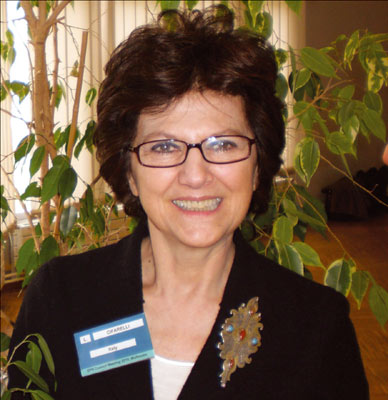
Image credit: EPS.
The European Physical Society (EPS) was founded at CERN in 1968. Today it represents more than 100,000 physicists through its 41 national member societies and it provides a scientific forum for more than 3000 individual members from all fields of physics.
Around 50 universities, research institutes, laboratories and enterprises that are active in physics research are also present as EPS associate members. CERN was the first to join and has supported the EPS since the very beginning. Many leading personalities from CERN have been EPS presidents: Gilberto Bernardini, the founder and first president of the EPS, who at the time was CERN’s research director; Antonino Zichichi; Maurice Jacob and Herwig Schopper.
The EPS is a non-profit association whose purpose is to promote physics in Europe and across the world. In 1968, when European integration was still rather vague, the establishment of the EPS was, to quote Bernardini’s inaugural address in the CERN Council Chamber, “a demonstration of the determination of scientists to make their positive contribution to the strength of European cultural unity.”
Today the EPS continues to play an important role in fostering the scientific excellence of European physicists, through high profile activities, in enhancing communication among physicists in Europe and across the world, and in bringing major issues in physics, and science in general, to the attention of the public and policymakers.
So how is the EPS organized? EPS members decide the priorities of the society, allocate resources for its activities and hold positions of responsibility. The scientific activities of the EPS segment into divisions and groups, which are governed by boards. Such activities include renowned topical conferences, seminars and workshops.
The divisions and groups also develop outreach activities, for students and for the general public, and support measures to help physicists from less-favoured regions of Europe and from scientifically emerging countries worldwide to participate in EPS initiatives.
A number of prestigious prizes are awarded by the EPS divisions and groups in recognition of outstanding achievements in all fields of physics. These often anticipate the Nobel awards.
The EPS has 11 divisions, covering specific fields of physics research: Atomic, Molecular and Optical Physics, Environmental Physics, High Energy and Particle Physics, Nuclear Physics, Physics in Life Sciences, Plasma Physics, Quantum Electronics and Optics, Solar Physics, Statistical and Nonlinear Physics.
In addition there are seven groups that look at questions of common interest to all physicists, such as: Accelerators, Energy, and Technology; but also the History of Physics and Physics for Development. Finally, a number of committees deal with social questions: European Integration, Gender Equality in Physics, Mobility, Physics and Society and Young Minds.
Like all learned societies the EPS publishes a letters journal (Europhysics Letters), a scientific bulletin (Europhysics News) and, more recently, an electronic newsletter (e-EPS). These are produced in partnership with a number of member societies and their respective publishing houses.
As a consequence of its expansion and evolution over the past 40 years, the EPS has undergone several revisions to assess and define its two-fold role of learned society and federation of national societies, so that it can act as an authoritative, scientific opinion-maker.
In 2010 the society sketched out its new strategy plan and identified new guidelines. The EPS needs to gain more visibility, to strengthen and highlight the activities of its divisions and groups and to generate a greater spirit of belonging and cohesion among its members. It also needs to bring added value and provide a louder common voice to its member societies and associate member institutions. It should increase its potential for co-operation and solidarity with less-favoured countries.
The preservation of the quality of European publications, in particular EPS journals and those related to or recognized by the EPS, and their integration into the context of global publishing is another main objective. Finally, establishing and strengthening links with other scientific societies worldwide – physical, astronomical and chemical – is among the new EPS priorities.
In this perspective, further intensifying the good relations and privileged interactions between CERN and the EPS would be highly desirable. Both institutions are on the same wavelength, share the same vision and support excellency in joint fundamental and applied research. They are concerned with technology transfer and industry’s involvement in physics research and they care deeply about education matters, outreach, knowledge dissemination and public awareness.
As CERN’s director-general Rolf Heuer repeatedly emphasizes, “We must bring science closer to society.” A tighter collaboration between the unique European research laboratory that is CERN and the EPS could serve this common goal; moreover CERN could help considerably to boost the future of the EPS.








